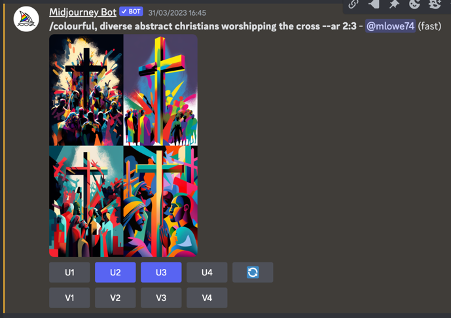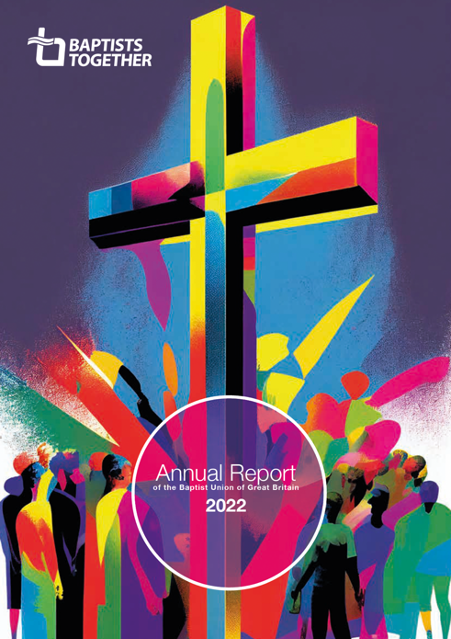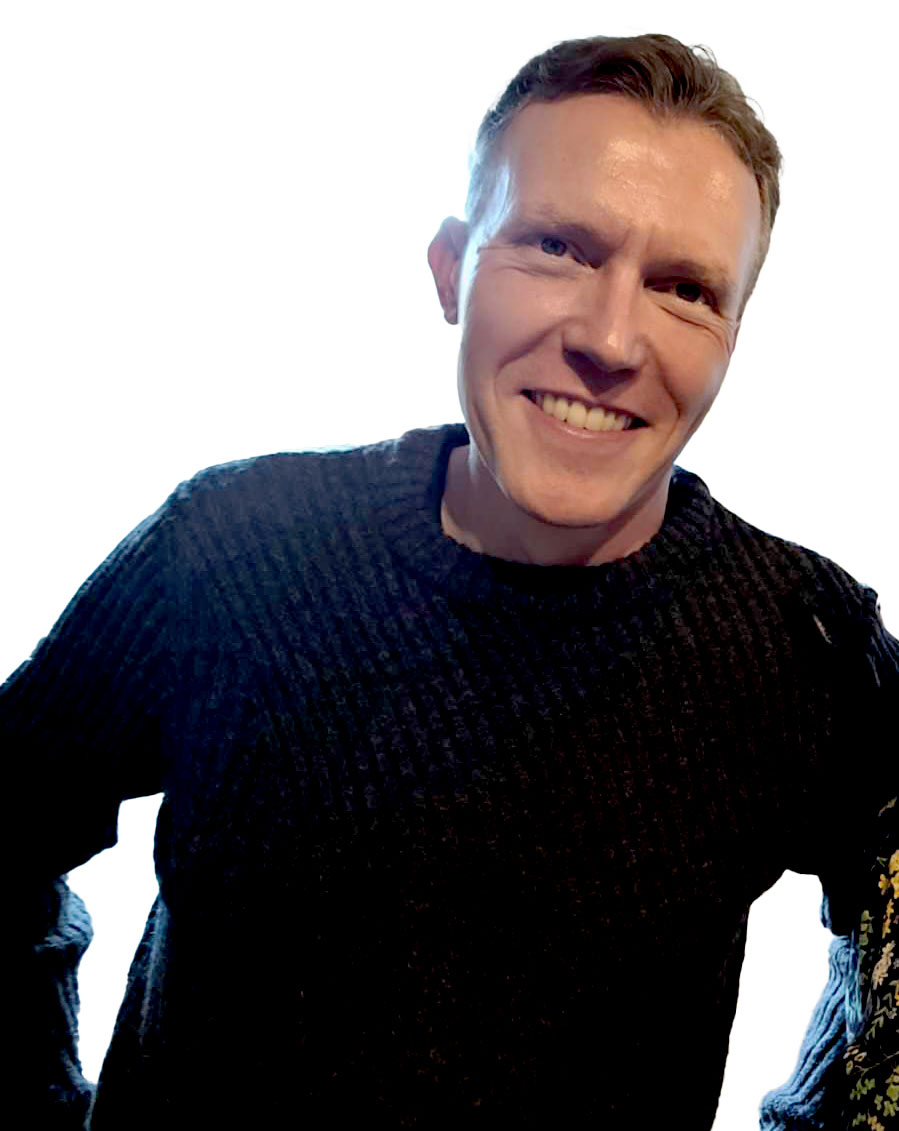
Artificial
Exploring AI in art and the questions it raises through a Christian lens. By Mike Lowe
I’ve always been a fan of sci-fi, and I’m now old enough and live in an age where some ideas I saw or read about in my childhood have become reality; others remain pure fantasy, while others have emerged as an interesting blend of ‘sci-fi meets real world’. One such example is art and photography created by artificial intelligence. I love Star Trek and in the ‘Next Generation’ series and films you find the lovable character of Commander Data, a synthetic human. He’s a bit like a robot Pinocchio: he wants to be a real human and tries so hard to explore what that might mean for him. As part of the journey, he reached for the paintbrushes on many occasions leading to often amusing scenes.

In the real world I enter my Discord (an instant messaging social platform) chat with the Midjourney Bot and together we work on creating some Christian art. Midjourney is what’s known as generative artificial intelligence or generative AI. It is a type of artificial intelligence system capable of generating images in response to prompts made by humans.

I’m presented with some options I’m interested in based on my prompt. I refine one of the images and soon enough I’m happy with what MidJourney has created - the result of which eventually became the front page of the
2022 Annual Report.
Midjourney is no Commander Data, but image generative AI raises questions we must theologically reflect on as Christians. There are several areas to consider:
-
From a communications perspective it is something we must address with urgency. Social media platforms like TikTok and many advertising firms have very quickly embraced image generative AI. To be noticed in the crowded digital world, a high level of visual professionalism is expected – including everyone who is part of Baptists Together. Generative AI is not just used to create artistic images, but logos and brands. The digital natives are not interested in whether you have the means to look great – you look great or you get ignored.
-
In addition to being a sci-fi fan, I’ve been a lifelong artist. I was captivated by butterflies at the age of three and had to respond to them by making images, something which has remained with me. I’m fascinated by the forever-asked question ‘what is art?’. For me, simply put, it is any image which has intention behind it, a desire to explore thoughts and emotions visually. From a reformed Christian perspective there has been a long and deep suspicion about art and visual based works. There are several reasons for this, one being the second commandment:
You shall not make for yourself an idol, whether in the form of anything that is in heaven above, or that is on the earth beneath, or that is in the water under the earth. (NRSVA)
There is a great deal of image idolisation in our digital world. While there is much to tease out about how we interpret the second commandment through the lens of Christ in this particular conversation, it definitely has a place. You’ll find the phrase ‘Do it for the gram’ in the Urban Dictionary meaning you do things in life to take pictures to post on Instagram and generate followers. Many famous Instagrammers are idolised through their carefully curated selfies and images, some of which use AI.
-
The ethics behind image generative AI, both in how it how it works at a fundamental level and the effect it may have going forward on artists, illustrators, and designers. These are very problematic areas. Many examples of image generative AI use datasets of images to learn from. These images were simply taken from the web and proactive permission seeking was not sought. Artists can request their images be taken out of the data but it’s not a Christian approach. Friends of mine who owns a graphic design agency have many concerns about the effects on their business.
-
A significant blurring of ‘real’ from ‘created’. The photographic capability of image generative AI is astonishing. In March the Sony World Photography Awards announced the winning entry in their creative photo category: a black-and-white image of an older woman embracing a younger one, entitled PSEUDOMNESIA: The Electrician. It wasn’t real. The artist Boris Eldagsen said “I applied as a cheeky monkey, to find out if the [competitions] are prepared for AI images to enter. They are not.” We are not ready to question every image we see because we are still programmed to trust what we see. ‘Seeing is believing’ is no longer a phrase we can use.
These points illustrate the complexity surrounding image generative AI. What we do know is that it is here to stay - and as Christians, how can we begin to navigate the questions it raises?
Firstly, what we’re looking at here is a technology, a tool. It’s easy to think the Bible might not have much to say about 21st century technology, but of course it does. We’ve been creating tools and technology for the whole of human history. The Bible does not condemn tools or technology as inherently evil. It shows how they can be employed for both good and evil purposes. Even if a tool was originally designed with malicious intent, it is not inherently evil itself. The sin lies in how individuals choose to use it. For instance, a sword can be wielded for just causes, such as defending against evil, but it can also be used to harm. The world itself did not sin, and our tools did not rebel against God - we did.
The story of Cain and Abel is an interesting one to look at. Cain and Abel were created by God with specific skills and talents, and they were called to work the land and care for animals using the technology of the time. However, Cain misused his God-given abilities, ultimately choosing to take a life instead of using his gifts for good. While the Bible is not specific, it is quite possible that Cain used a farming tool to commit the first murder (see Genesis 4.8).
One of the most significant technological advancements in human history was the printing press. It played a vital role in making the Bible more accessible to ordinary people and still does today. Yet the printing press also led to fake news, intrusive newspaper stories and pornography.
Although the motivations behind creating a particular technology can be morally complex, to use tools appropriately, we must understand the worldviews and motivations behind their creation. The team behind Midjourney say they’re ‘exploring new mediums of thought and expanding the imaginative powers of the human species’. Those imaginative powers could be for good or evil and so we still need to tread carefully.
I’m personally still reflecting on whether I’ll continue to explore image generative AI.
I do have a serious problem with tools which use datasets with information gained without permission. But for those who do seek permission, I can see how creative this could be as I try to use the skills God has given me.
In this article I’ve not aimed for easy answers. I hope it has given you challenging questions and will encourage you to have conversations on this topic, because you will be affected one way or another. I’d be very happy to have a conversation with you as a next step. You can also join our
Baptists Together Communications Facebook Group.
 Mike Lowe
Mike Lowe is Baptists Together Communications Manager
Click here to
download a pdf version of this article
Title image | Rawpixel.com on FreePik